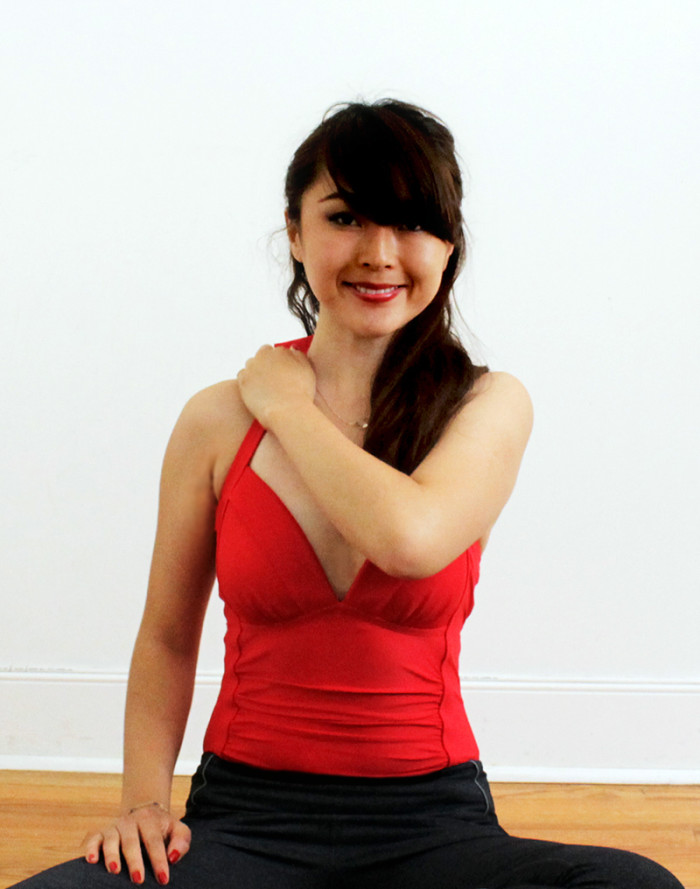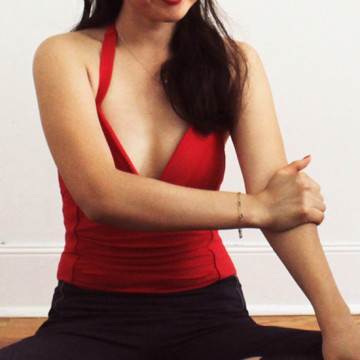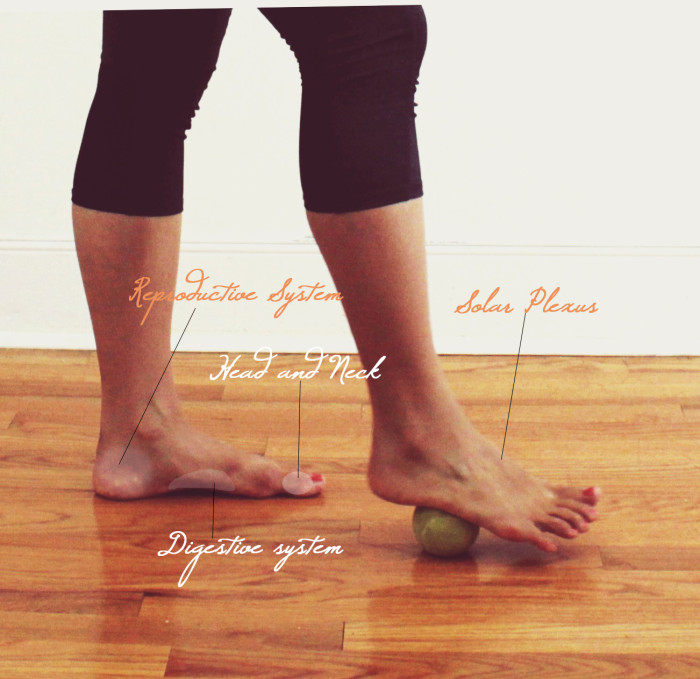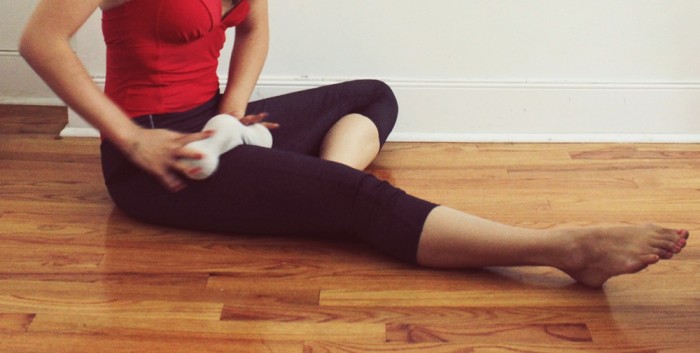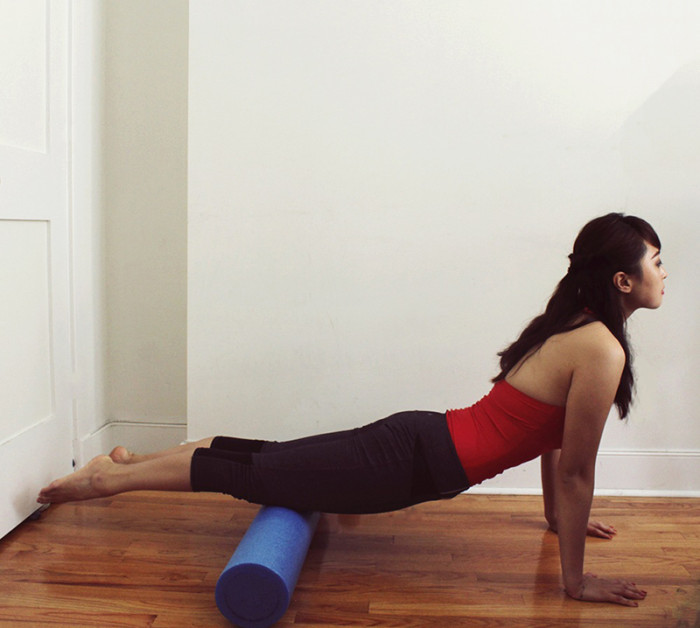I love being active and daily exercise is an essential part of my life. I definitely wasn’t born this way though–my family (like many Asian families, naturally) was much more literary and artsy. Sports was something we did occasionally like on a skiing trip. But once I realized how much more you can push yourself in life by building up physical stamina, I was hooked. Around 14 or so I started running one mile at a time, probably taking breaks after every minute. Now I love running 3-4 days a week, as well as taking yoga or barre class once or twice–and the more I sweat, the better.
All this pounding the pavement does take a toll, however. Recently I injured a tendon in my right foot–not so much that I can’t run or workout, but definitely enough to notice. And then I just hurt my right elbow last night–it’s like I’m breaking down! Injuries are not only painful to deal with, but in some cases even depressing. It makes you feel a bit helpless and confused. But instead of giving in to my usual urge to sulk, or ignoring the symptoms, this time I’m going to take the time to listen to my body’s messages. Small injuries are signals from your body to change what you’re doing: to maybe warm up more before increasing intensity, roll out your muscles after working out, and to reduce inflammation through proper nutrition and self-care. Here are some self-massage techniques that help prevent small injuries, reduce delayed onset muscle soreness (DOMS), and even release emotional stress.
No Tools Needed
A bit of homemade coconut massage oil will make this even more enjoyable. If you’re pressed for time, even rubbing a bit of almond or olive oil in your hands with a drop of essential oil (I use peppermint) will work.
1. Self-massage through neck, shoulders, arms–Sit in a comfortable position. Using your right hand, firmly knead down the length of your left side, starting at the nape and traveling all the way to the fingertips. Repeat on the other side.
2. Happy Baby–Lie flat on your back. Raise your feet and grab hold of the outside of your feet (your elbows will be just inside your knees). Stay in this position for a few breaths, then start rocking from side to side, allowing your body weight to massage your spine against the floor. Then engage your core and rock yourself upward and downward, massaging the spine.
3. Foot massage–Start from your knees and knead down your calves toward your feet. Firmly squeeze the back of your ankles (right behind the bone) and work down to your heels, which is great for your reproductive system (including PMS). Work up to the inside of your feet (the part that is lifted when you make a footprint in the sand) and massage it using the thumb. This is the area associated with your digestive system (aka solar plexus) in reflexology, but it’s also fairly injury-prone, especially if you run and tend to roll in your feet. To relieve tension in neck and head, gently pull away from each of your toes (you can also rotate them lightly). Place each finger between each toe (like you’re “clasping hands”) and gently lift the toes up away from the foot to stretch the metatarsals.
Tennis Ball
4. Foot massage–stand and roll your foot over a single tennis ball, putting as much pressure as needed. Then roll the ball to the toes, and work it beneath the toes. Many dancers use this massage because it not only releases tension in the feet, but also makes you more able to “feel the floor.” People who stand or walk for long hours, or wear uncomfortable shoes for work can really benefit from this massage. Try to do at least 1-2 minutes on each side.
5. Body massage–Fill a tube sock with 3 tennis balls and tie it at the end. Use this to roll out any tense areas of the body. You may also place it underneath your back or shoulders and roll over it to work any knots.
Foam Roller
6. Quads, hamstrings, glutes, calves–you can roll out your entire lower body on a foam roller. Use your hands as support and place the desired muscles over the foam roller, and slowly move in backward-forward direction for as long as you need to. Be sure to put enough body weight on the foam roller–you don’t want to be holding yourself up too much through your upper body.
7. Spine–place the foam roller on the floor. Sit yourself just on the end of the roller and lower your spine on the length of the roller, one vertebra at a time. Slowly roll back up, again one vertebra at a time, until you’re sitting up. This time, lower down, paying attention to the way your spine is lengthening (imagine placing each vertebra farther apart than last time). Repeat as much as you want.
Massages, like stretches, are not a luxury but an important part of self-care! And taking small preventive measures will keep your body pain-free for the long run. Now if you’ll excuse me, I’m going for an injury-friendly swim in Central Park! 🙂
What’s your favorite self-massage technique?
Also see: Healing Touch Part 1: Massaging Your Pets
10 Reasons Why All Women Should Strength Train
Finding Balance with Inversions
Vinyasa Flow Yoga for Stress Relief
__
Photo: Peaceful Dumpling

